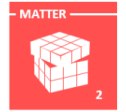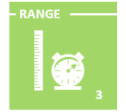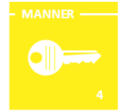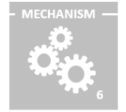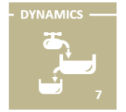Efficiency - ¨Performance Scheme¨ 
(The performance-wise Manner)

The Efficiency: how the organization stands, to ensure business performance.
Efficiency is the third element that defines the "Manner" block of the BM. This component of the Strategic level of business is closely related to the Tactical level, as it is at this latter level that the keys of business efficiency often lie. In other words, the keys to the efficiency of the Business Activity are often grounded on the Business System that supports it.
Defining the Efficiency element of a BM is defining the "Performance Scheme", i.e. the way to play the business game to achieve performance in a sustainable way.
The Performance Scheme basically determines the organization's posture with regard to the following attributes of the Business System:
- Pillars: BM Efficiency through Business System's Strength
- Drivers: BM Efficiency through Business System's Fitness
- Levers: BM Efficiency through Business System's Flexibility

This general approach regarding the sources of performance gives a way to map the actual strategic functioning of a business:
The BM is based on specific Pillars, the combination of which induces a set of Drivers, sources of Key Performance Results, as long as steering is enabled by relevant Levers.
The result of the Efficientcy analysis is a "BM map":

To take a closer look at the attributes of Business Efficiency, let's use an example of BM map for an imaginary convenient store chain. The BM map may be the following:
(click on the following elements for more details)
> Pillars
(Playing with Strengh)
Pillars are the elements of the Business System put in place by the Organization, or some of their characteristics, that empower business Drivers. Pillars are fundamental for the way the business works.
In our example, the different Pillars are:
- Store Location: the different stores of the chain and their specific geographical location
- Product Variety: all the different products that each store has for sale
- Payment terms: the applicable delays to pay the suppliers
- Brand: the image of the convenient store chain
As shown in the BM map, the Pillars empower the Drivers:
- Store locations and Product variety allow product availability for customers
- Product variety allow economies of scales, as per unit allocation of resources and operations can be reduced
- Product variety also improves the probability of offer-needs match
- Payment terms improves the trade cycle: stores receive payments before they have to pay suppliers
- The Brand ensure the attractiveness of the stores for potential customers
> Drivers
(Playing with Fitness)
Drivers may be attributes of some elements of the Business System, but more generally mechanisms and dynamics between such elements, or mechanisms and dynamics between such elements and external factors, that depend strongly on Pillars, and that are the source of Key Performance Results (KPR).
In our example, the different Drivers are:
- Economies of scales: ability to reduce per-unit allocation of resources and operations
- Offer-needs match: ability to meet customers' needs (for many customers and/or for many needs)
- Product availability: ability to reach potential customers to ensure transactions
- Attractiveness of the stores: ability to attract potential customers more than competitors
- Trade cycle: ability to ensure a long delay between cash collection and invoice payments for a given product
As shown in the BM map, the Drivers are source of Key Performance Results:
- Economies of scale result in lower costs
- Product availability, offer-needs match and attractiveness result in sales volumes
- Trade cycle results in negative WCR (Working Capital Requirement)
There is a great variety of possible Drivers, for different businesses. For exemple:
- Bargaining power: ability to achieve transactions in good conditions
- Economies of scale: ability to reduce per-unit allocation of resources and operations
- Network effect: ability to strongly increase attractivity of the value proposition due to the size of the existing business-related network (ex: social networks)
- Positive Feedback Loops: ability to strongly increase some operations due to self-reinforcement of its parts
- Operational efficiency: ability to ensure a certain level of output with limited levels of input
- Supplies-related Synergies: amount of Supplies divided or shared by different processes
- Resource-related Synergies: usage of Resources divided or shared by different processes
- Activities-related Synergies: activity execution divided or shared by different processes
- Frequency & Paralelism (see Business Cycles)
- Leverageability & Duplicability (see Business Scales)
- etc.
> Levers
(Playing with Flexibility)
Levers are elements of the Business System, or some of their attributes, that can be modified, removed or iniciated, in order to ensure flexibility to the BM: securing changes, may they be wanted or unexpected, without compromising (or even sometimes actually improving) the functioning of Pilars and Drivers.
The Levers are fundamental components of management of the business activity: flexibility allows tactical modifications in the BM, as opposed to strategic decisions that imply a new BM for a new business phase.
In our example, the different Levers are:
- Purchasing Department: set of resources (including HR) ensuring contracting and transactions with suppliers
- M&A partner: sub-contractor ensuring search for new store locations, acquisitions or divestments
- PR activity: public relation activity
As shown in the BM map, the Levers ensure the steering of several Pillars:
- the purchasing department can influence payment terms
- the M&A partner can ensure the opening of new stores
- the PR activity may have impact on the brand
Flexibility is about adaptating and changing, and is split between an operational and a temporal perspective:

----------------------------------------
> Performance
(The result)
Performance is not as such part of the BM: it is its outcome.
In our example, the different KPRs are:
- Low costs
- Sales volumes
- Negative WCR (Working Capital Requirement)
As shown in the BM map, KPRs may have feedback impacts on other components. In the present case, sales volumes can help negociating better payment terms with suppliers.
KPRs, at least when talking about for-profit organizations, are usually linked to:
- Revenue
- Costs (including cost of capital and taxes)
- WCR
- Product mix
- Investments
- Specific qualitative objectives
Performance is measured through KPI metrics, associated to each KPR.

